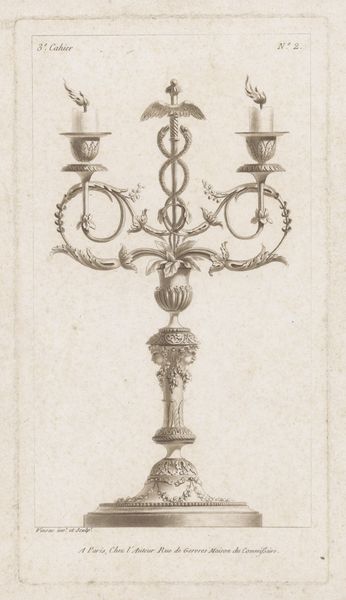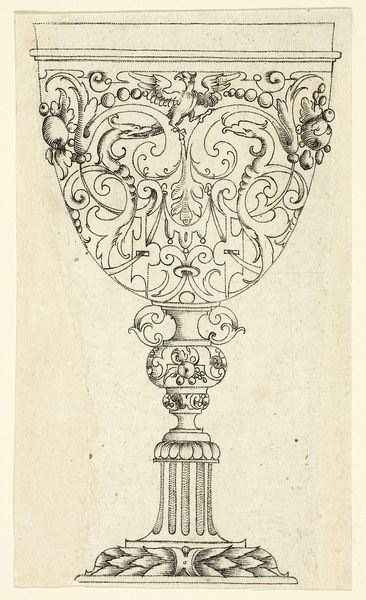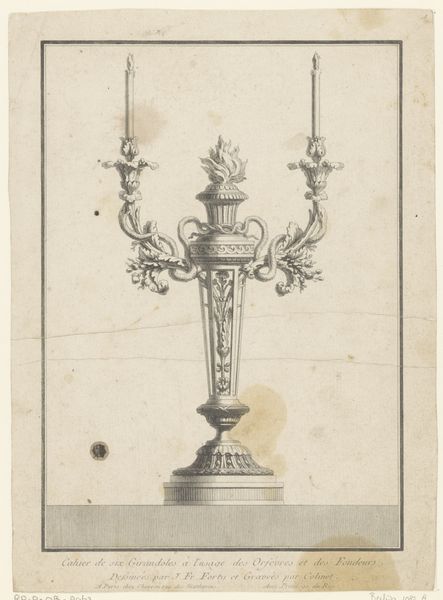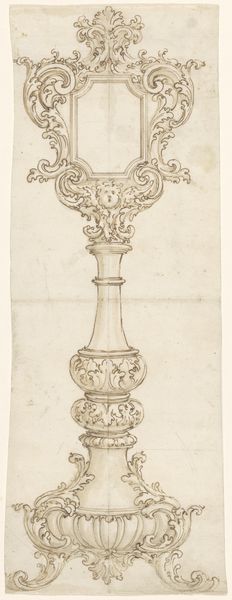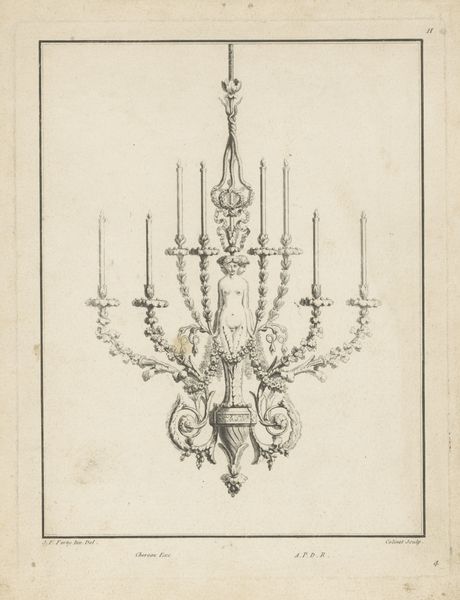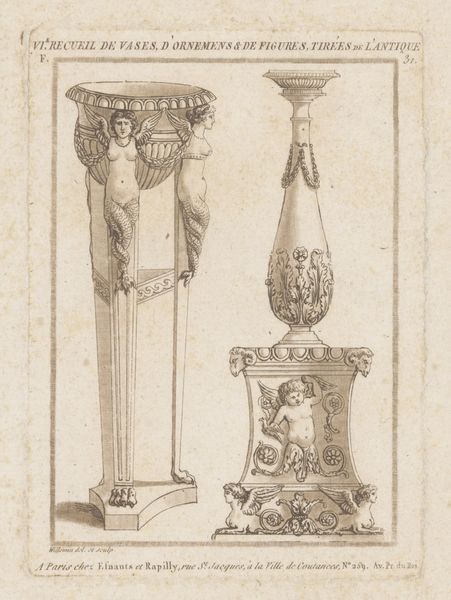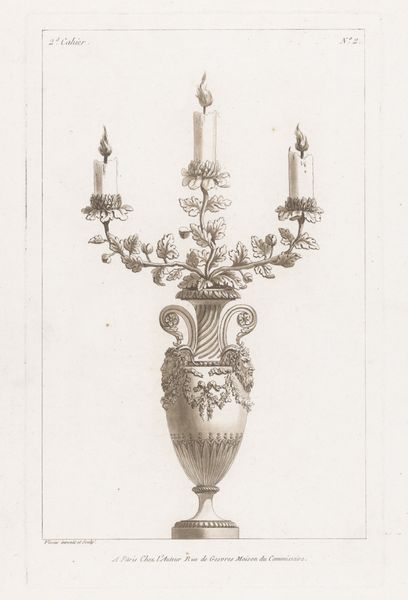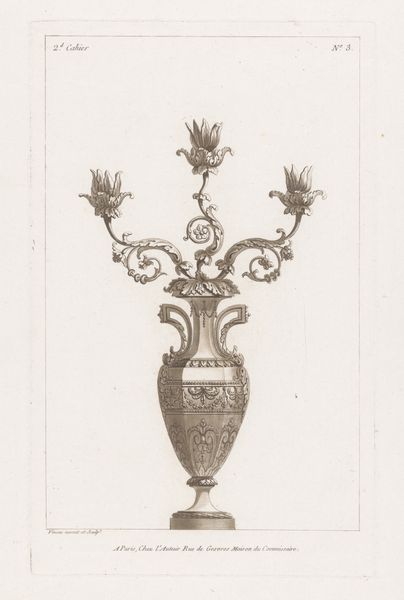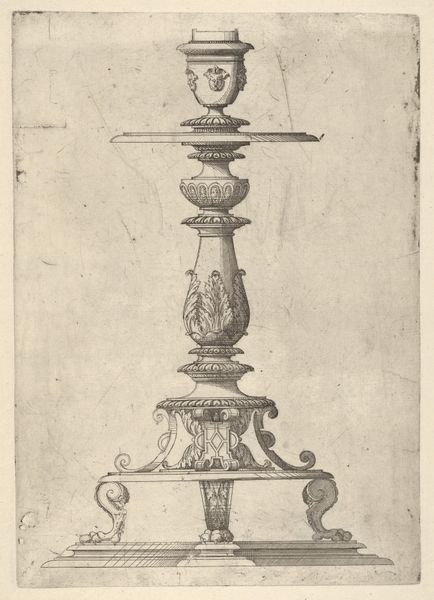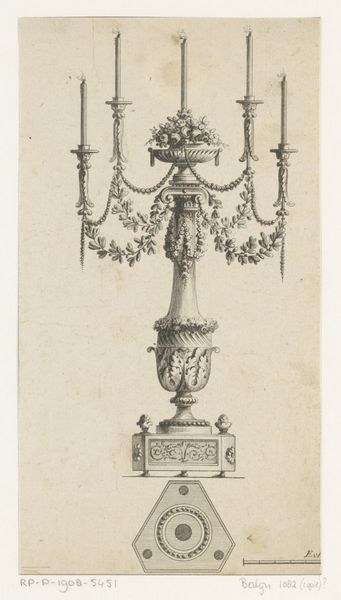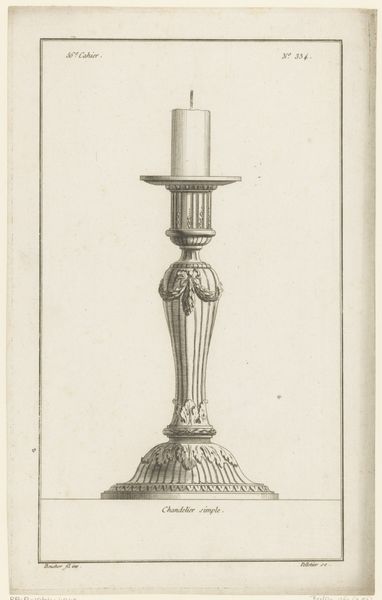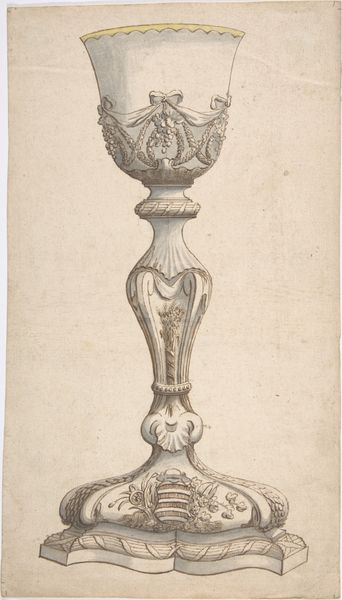
Dimensions: height 270 mm, width 145 mm
Copyright: Rijks Museum: Open Domain
This is a design for a candelabra by Claude Dominique Vinsac, likely made in the late 18th century. As a drawing, it is simply ink on paper, but it represents a complex set of craft practices. The piece is described as a "girandole," which is a branched support for candles or other lights. The design also incorporates a "thyrsus," a staff tipped with plant matter, associated with Dionysus, the Greek god of wine and revelry. So you have a combination of artificial and natural light, of design and symbol. The metal worker who would realize this design would need skills in casting, chasing, and finishing. It would require precise work to achieve this level of detail. Consider the social implications: while the consumption of candlelight was widespread, the skilled labor and precious materials made this an object for elite appreciation. By considering its making and historical context, we move beyond mere aesthetics to understand the broader significance of this design.
Comments
No comments
Be the first to comment and join the conversation on the ultimate creative platform.
